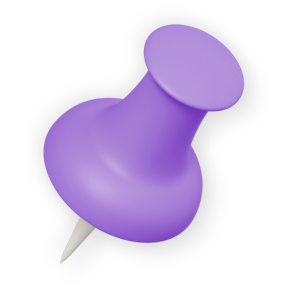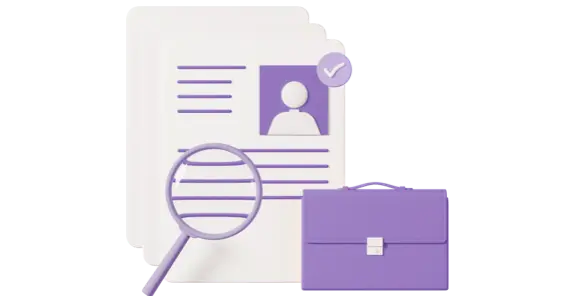Virtual reality designer
Design people, places, tasks and experiences, then work with a developer to turn it into an immersive experience that blurs the lines of reality.
Also known as: extended reality designer

About the job
Salary
Source: LMI for All
Weekly
£650
Average
Monthly
£2,816
Average
Yearly
£33,800
Average
5,800
people are currently employed
High growth
400 more jobs in 5 years
These figures refer to this job and similar ones with comparable skills and qualifications. They only apply to Scotland. Source: Oxford Economics
What it's like
Virtual Reality (VR) designers create fictional worlds for developers to turn into immersive experiences. You’ll use all your 3D design skills to create engaging, multi-dimensional environments that easily lend themselves to the VR platform.
Designing for VR calls for detail. The worlds you design must be believable, explorable and interactive. You’ll need to keep your designs free from anything that could distract the user from their digital experience.
At the moment, the tech is most commonly associated with gaming, but it has huge potential for education and training too. You might be tasked with designing a simulation tool that teaches surgeons how to perform a new life-saving operation. Or you might create a hyper-realistic fire that’s used to train firefighters.
Working with such new technology lets you push the limits of what’s possible. You’ll work closely with your development team to find ways to bring your vision to users’ headsets in the most realistic way.
What you’ll do
Sketch concepts and ideas for the virtual reality world
Map out the places and tasks a user will encounter as they progress through the immersive experience
Use computer-aided design (CAD) to convert drawings into 3D models
Work with developers to make sure your designs can be translated into code
Design interactive VR features that engage and educate users
Hold regular meetings with the other people involved in the project to make sure everything is on schedule
Take part in experience testing and make design changes that incorporate user feedback

Hours

Environment
Explore more information about this job
Here are some useful links to learn more about this career:
Like the sound of this career?
Browse courses in Scotland related to 'Virtual reality designer'
Select qualification level(s)
Other careers that you might like
Web developer Web editor User experience (UX) designer Content designer Service designer
Related industries
Many jobs can be done in lots of different industries. We've highlighted the ones we think are most important for this job.
Engineering and manufacturing Digital technologies Construction and built environment
Top skills
Skills are things you're good at. Whether you know what yours are or not, everyone has them!
It's useful to learn which ones are important in a job so you know the areas you need to brush up on. It can also help you work out if you're suited to a career.
Here are some of the skills you'll need to do this job:
- time management
- developing a plan
- attention to detail
- researching
- problem solving
- innovative
- designing
- creative
- working with technology
- verbal communication
- adaptability

Your skills are important
Our unique skillsets are what make us stand out from the crowd. Learn about each skill in depth and discover what employers look for in your applications and interviews.
Getting in
Explore the sections shown for more information about getting into this career.
You might have qualifications which are not shown here but will allow you access to a course. You can compare your qualifications by looking at their SCQF Level. For more information about this, check out the SCQF website.
Always contact the college, university or training provider to check exactly what you'll need.
Colleges and universities will list subjects you'll need for entry to a course. Some useful subjects include:
Art and Design
Computing Science
Graphic Communication
Foundation Apprenticeship: Creative and Digital Media
Foundation Apprenticeship: Software Development
You can get a head start in this career by doing a Foundation Apprenticeship in S5 and S6.
You'll get an SCQF level 6 qualification which is the same level as a Higher. You'll also learn new skills and gain valuable experience in a work environment.
Discover what's on offer at your school on Apprenticeships.scot.
You can develop the necessary skills for this role through a variety of routes.
There is no set entry route but entrants will often have degrees in:
Immersive systems design
Computer games
Computer animation
Games and virtual reality
There are also postgraduate qualifications available in subjects such as:
3D Design for virtual environments
Medical visualisation and human anatomy
Serious games and virtual reality
As you would be involved in virtual reality design and software, experience or a qualification in the use of 3D modelling would also be useful.
For some courses, you will be asked to provide a portfolio demonstrating your practical skills and interest in the course. This could be in various forms, such as, drawings, paintings or photographs. Entry requirements will vary between colleges and universities – always check what is being asked for. You might also want to consider having a Digital Portfolio. This will allow you to upload videos, photos and links to different online platforms such as YouTube and Flickr.
Apprenticeships
You can gain skills and qualifications in the workplace through options such as:
Foundation Apprenticeships (FAs) are chosen as one of your subjects in S5 and S6 but include hands-on learning at a local employer or college. They are the same level as a Higher.
You might want to consider an FA in areas such as:
IT: Software development
Creative and digital media
Modern Apprenticeships (MAs) mean you learn on the job. You get paid and work towards a qualification at the same time.
You might want to consider an MA in areas such as:
Creative and digital media
Graduate Apprenticeships (GAs) are designed for industry and you'll spend most of your time learning on the job but you'll also go to uni or college. You'll get a job, get paid and work towards a qualification at the same time.
You might want to consider a GA in areas such as:
IT: Software development
Not all employers list specific qualification requirements but they might ask for relevant experience, usually work based, that show a range of transferable skills.
As technology is evolving and expanding, it is necessary to keep up with advances in software, hardware and programming as well as trends and techniques used within the industry, throughout your career.
Gaining relevant work experience would be beneficial as it would help you gain experience and network - ensure quality work that you do is included in your portfolio/showreel and this can then be sent to employers.
Explore over 22,000 courses in Scotland
Find the perfect course to boost your career.
